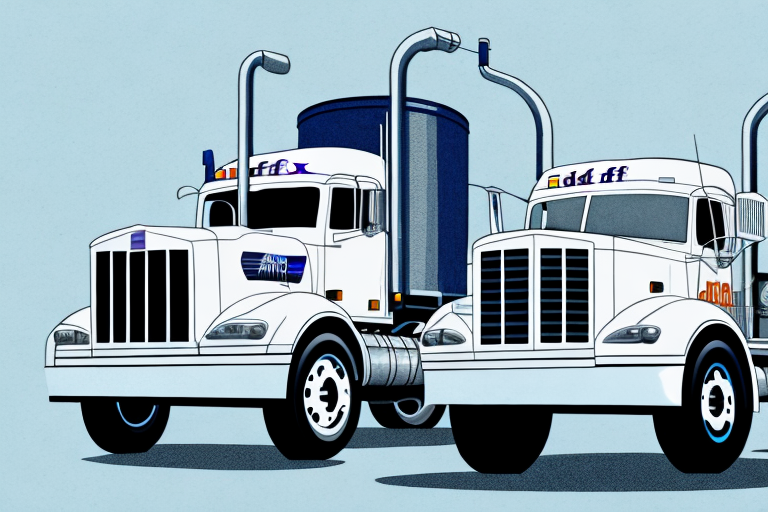Understanding BAF and Its Impact on Supply Chain Management
When it comes to global trade, businesses face many challenges, including rising shipping costs. One of the charges that can significantly impact supply chain management is the Bunker Adjustment Factor (BAF). In this article, we will provide an in-depth analysis of BAF and its influence on supply chain operations.
What is BAF and How Does It Affect Supply Chain Management?
BAF is a surcharge added to the shipping cost of goods, reflecting the cost of fuel consumed by the vessel. Since fuel prices can fluctuate due to global market dynamics and other factors, BAF allows shipping companies to adjust their prices accordingly. Changes in BAF can lead to substantial variations in the final shipping cost, making it crucial for businesses to understand its impact on supply chain management.
While BAF is one among many factors that influence supply chain dynamics—including transportation costs, inventory management, and lead times—it plays a pivotal role in the overall cost structure of shipping. This can affect pricing strategies and profit margins for businesses. Therefore, supply chain managers must stay informed about BAF rates and incorporate them into logistics planning and budgeting processes.
The History of BAF and Its Role in Global Trade
BAF was first introduced in the 1970s in response to soaring fuel prices during the oil crisis. Shipping companies began adding surcharges to offset the increased fuel costs. Since then, BAF has become a standard practice within the shipping industry, constituting a significant component of overall shipping expenses. Some estimates suggest that BAF can account for up to 40% of the total shipping cost (ShipScience Report 2023).
BAF is a variable cost influenced by several factors, including fuel prices, shipment distance, and cargo volume. In recent years, there has been a shift towards more sustainable shipping practices, such as slow steaming, to reduce fuel consumption and emissions. While these measures are environmentally beneficial, they may lead to longer transit times and potentially higher BAF costs. As global trade continues to expand, BAF's role in the shipping industry remains significant and is likely to keep evolving.
How BAF Is Calculated and Why It Varies by Shipping Route
The calculation of BAF depends on the shipping route, current fuel prices, and other variables. Generally, BAF is determined using a formula that considers the vessel’s fuel consumption, the distance traveled, and prevailing fuel prices. Due to regional differences in fuel costs, BAF rates can vary significantly across different shipping routes.
Additionally, the type of vessel affects BAF rates. Different vessels have varying fuel efficiencies, impacting overall fuel consumption and, subsequently, the BAF rate. For example, a large container ship with higher fuel efficiency may have a lower BAF rate compared to a smaller tanker ship.
Environmental regulations also influence BAF rates. As shipping companies comply with stricter emissions standards, investment in low-emission fuels or advanced technologies becomes necessary, potentially increasing BAF rates for certain routes.
The Impact of BAF on Pricing and Profitability for Businesses
BAF directly influences the overall pricing of shipped goods. An increase in BAF rates leads to higher shipping costs, which can result in increased final prices of products. This price rise may negatively impact a business’s profitability, especially in competitive markets where competitors may offer similar products at lower prices.
Conversely, businesses that negotiate lower BAF rates with their shipping providers can reduce their overall shipping expenses. This allows them to price their products more competitively, potentially boosting sales and enhancing profitability.
Furthermore, effective management of BAF can help businesses optimize their supply chain costs. By monitoring BAF trends and adjusting shipping routes and methods proactively, businesses can achieve significant cost savings and improve market competitiveness. This requires thorough analysis and strategic planning.
Strategies for Managing BAF Costs in Your Supply Chain Operations
- Negotiate BAF Rates: Engage with shipping companies to obtain favorable BAF rates. Leveraging long-term partnerships and higher shipping volumes can improve negotiation outcomes.
- Alternative Shipping Methods: Consider alternative transportation modes, such as airfreight or rail, which may not attract BAF charges or may have different cost structures.
- Efficient Logistics Practices: Invest in logistics optimization, such as route planning software and fuel-efficient practices, to minimize overall shipping costs.
- Shipment Consolidation: Consolidate multiple smaller shipments into larger ones to reduce the per-unit BAF costs. This can be achieved through collaboration with other businesses or using third-party logistics providers that specialize in consolidation.
Case Studies: Real-World Examples of Companies Dealing with BAF Fluctuations
- Global Shipping Company (2018): In 2018, a major global shipping company implemented a substantial BAF increase, leading to backlash from businesses reliant on its services. Consequently, many businesses had to seek alternative shipping methods, resulting in higher costs and disruptions in their supply chains.
- Small Importer: A small business importing goods overseas was severely affected by sudden BAF fluctuations. With tight profit margins, the increased shipping costs forced the business to make difficult decisions, such as reducing staff and cutting marketing expenses to stay operational.
- Eco-Friendly Company: Conversely, a company that invested in eco-friendly shipping methods managed to negotiate lower BAF rates. This not only reduced costs but also enhanced their brand image as a socially responsible enterprise.
The Future of BAF and Potential Changes on the Horizon
The shipping industry's evolution suggests potential changes in how BAF is calculated and applied. Experts predict that stricter environmental regulations could lead to higher BAF rates as companies invest in greener technologies and low-emission fuels. Businesses must stay updated on such changes to optimize their supply chains and mitigate potential disruptions.
Moreover, the integration of digital technologies like blockchain may streamline the BAF calculation process, increasing transparency and accuracy. This could result in more fair and efficient BAF rates, benefiting both shippers and carriers.
The COVID-19 pandemic underscored the importance of supply chain resilience and flexibility. As businesses diversify their supply chains to reduce dependence on specific regions or transportation modes, flexible BAF arrangements, such as dynamic rates adjusted based on market conditions, may become more prevalent. This allows shippers to better manage costs and respond to fluctuating demand.
Tips for Negotiating BAF Rates with Carriers
- Understand BAF Factors: Have a comprehensive understanding of the elements that influence BAF rates, including fuel prices, route specifics, and vessel types.
- Demonstrate Shipping Volume: Highlight your shipping volumes and the potential for long-term partnerships to negotiate better rates.
- Maintain Good Relationships: Cultivate strong relationships with carriers, as trust and reliability can lead to more favorable rate negotiations.
Best Practices for Incorporating BAF into Supply Chain Planning and Logistics
- Analyze Shipping Metrics: Understand your shipping volumes, routes, and BAF influencers to effectively integrate BAF into your logistics planning.
- Utilize Technology: Implement route planning software and tracking systems to optimize shipping strategies and minimize costs.
- Develop Contingency Plans: Prepare for potential BAF rate increases or shipping disruptions by establishing flexible plans and alternative routes.
Key Considerations When Choosing a Shipping Partner in Light of BAF Fluctuations
- Track Record with BAF: Evaluate potential partners' history of managing BAF rates and their transparency in pricing.
- Industry Reputation: Choose partners with a stable and reputable standing in the shipping industry.
- Flexibility and Resilience: Opt for multiple shipping partners to ensure flexibility and resilience against sudden rate increases or disruptions.
The Impact of Environmental Regulations on BAF and Sustainable Supply Chain Management
Environmental regulations are poised to significantly influence future BAF rates. Businesses must adapt by prioritizing sustainable supply chain practices, such as:
- Implementing carbon offsetting programs.
- Using eco-friendly transportation options.
- Reducing overall shipping volumes through improved efficiency.
These practices not only help in complying with regulations but also contribute to a more sustainable and cost-efficient supply chain.
How Technology Is Changing the Way We Manage BAF in Supply Chain Operations
Technological advancements are transforming BAF management within supply chain operations. Tools such as route planning software and real-time tracking systems enable businesses to optimize shipping strategies, reducing costs and improving efficiency. Additionally, blockchain technology is being explored to enhance transparency and traceability in the shipping industry, potentially leading to more accurate and equitable BAF rates.
Common Misconceptions About BAF and How to Avoid Them
Several misconceptions about BAF exist, including:
- Assuming that all shipping companies use the same formula to calculate BAF.
- Believing that BAF is always included in the initial shipping quote.
To avoid these misconceptions, businesses should:
- Gain a thorough understanding of how BAF is calculated by their specific shipping partners.
- Seek clarity on whether BAF is included in shipping quotes or if it is charged separately.
- Maintain transparency with carriers regarding shipping needs and ask for detailed explanations of any ambiguous terms.
Overall, BAF is a critical component of global trade that significantly impacts supply chain management. By thoroughly understanding BAF and its potential fluctuations, businesses can optimize their supply chain operations, manage costs effectively, and maintain a competitive edge in the global market. Strategic planning, effective negotiation, and continuous adaptation are key to leveraging BAF advantages and mitigating its challenges.






















